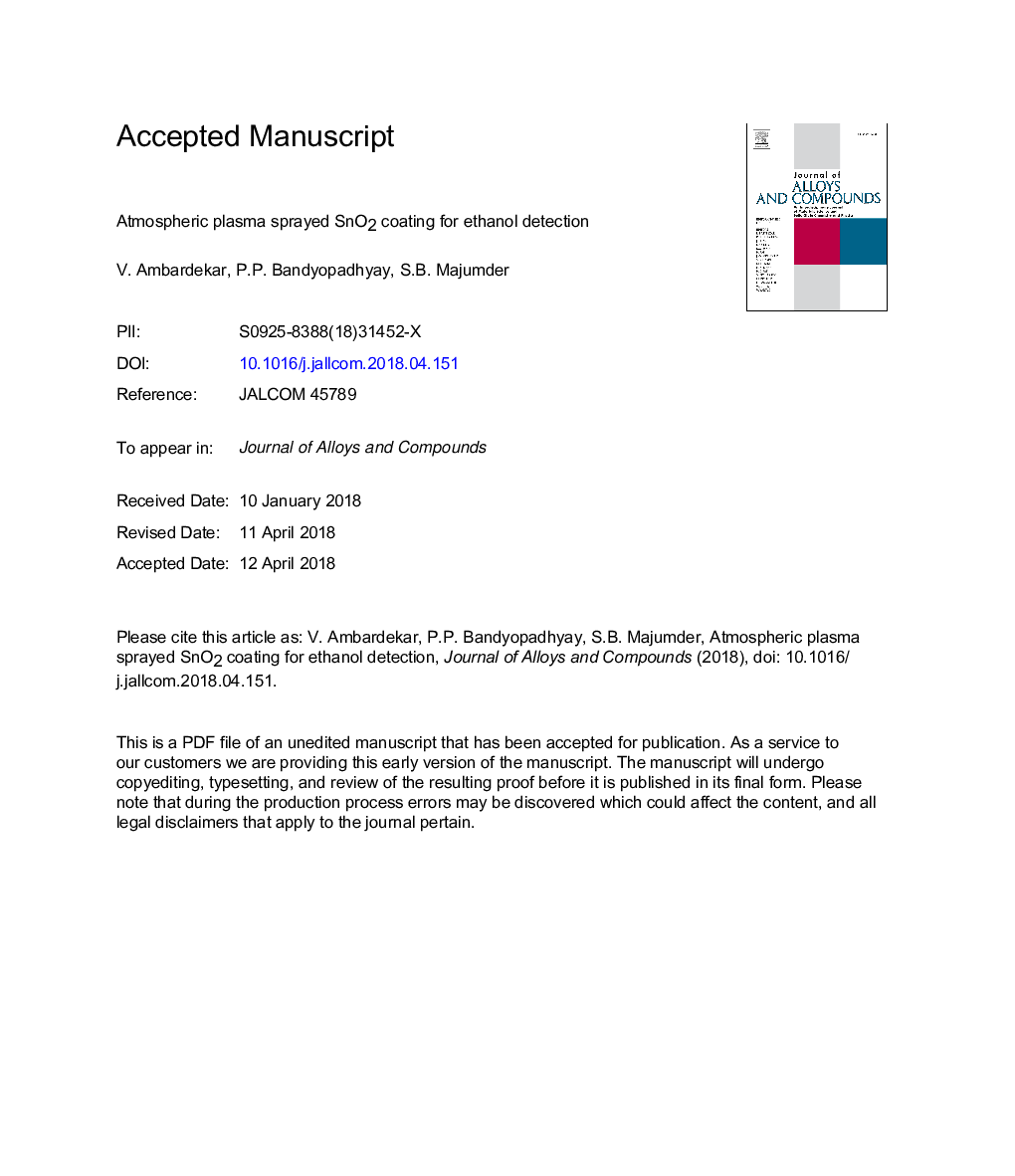| Article ID | Journal | Published Year | Pages | File Type |
|---|---|---|---|---|
| 7991602 | Journal of Alloys and Compounds | 2018 | 35 Pages |
Abstract
SnO2 coatings were deposited on alumina substrates using an atmospheric plasma spray. The coating morphology and phase structure were characterized by scanning electron microscopy and X-ray diffraction. Two different coatings were fabricated using nitrogen as a plasma forming gas with and without hydrogen. The arc current was kept fixed at 400 A during deposition. The ethanol sensing capability of these two coatings was studied using a cost effective homemade quasi-static sensing chamber. The sensing measurement was performed in the temperature range of 175-300â¯Â°C. The coating deposited at 400 A without hydrogen showed higher response in the presence of ethanol. It was tested further in the presence of acetone and isopropanol to check the cross-sensitivity. The concentration dependent response characteristics of the same coating were investigated in the range of 25-300â¯ppm. This coating exhibited excellent repeatability characteristics in the presence of ethanol at 300â¯Â°C.Coating showed excellent durability in the presence of ethanol. The effect of relative humidity on the sensor response was also investigated. The temperature dependent response was modeled using a gas diffusion theory to better understand the sensing characteristics. From the simulated temperature dependence of sensor responses we have estimated activation energy for transduction and first order kinetics together with the sensitivity of these sensors. We have argued that differences of these activation energies could be a basis to address the cross-sensitivity issues toward acetone and isopropanol sensing. To the best of authors' knowledge, this is the first report exploring the sensing capability of atmospheric plasma sprayed SnO2 coatings.
Related Topics
Physical Sciences and Engineering
Materials Science
Metals and Alloys
Authors
V. Ambardekar, P.P. Bandyopadhyay, S.B. Majumder,
